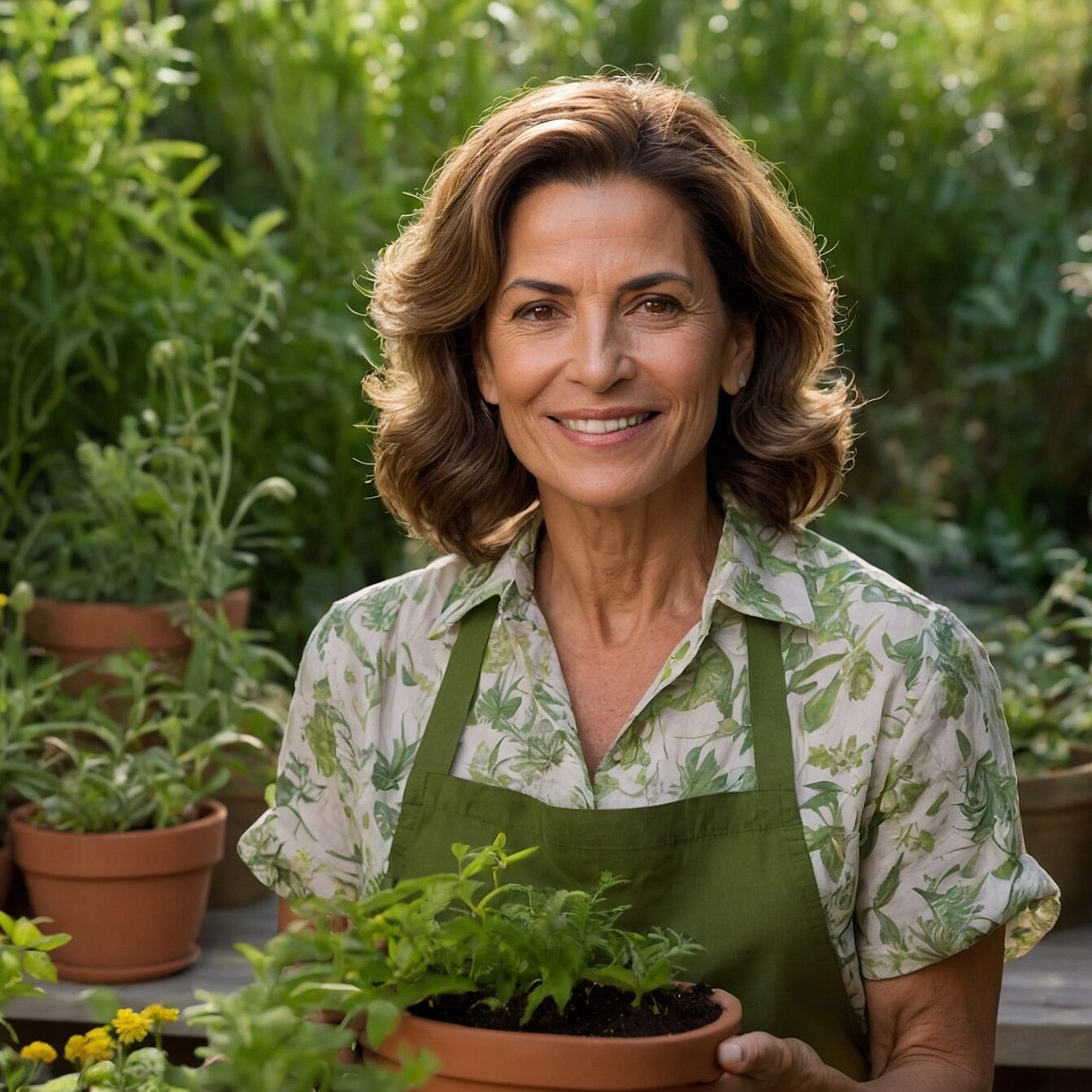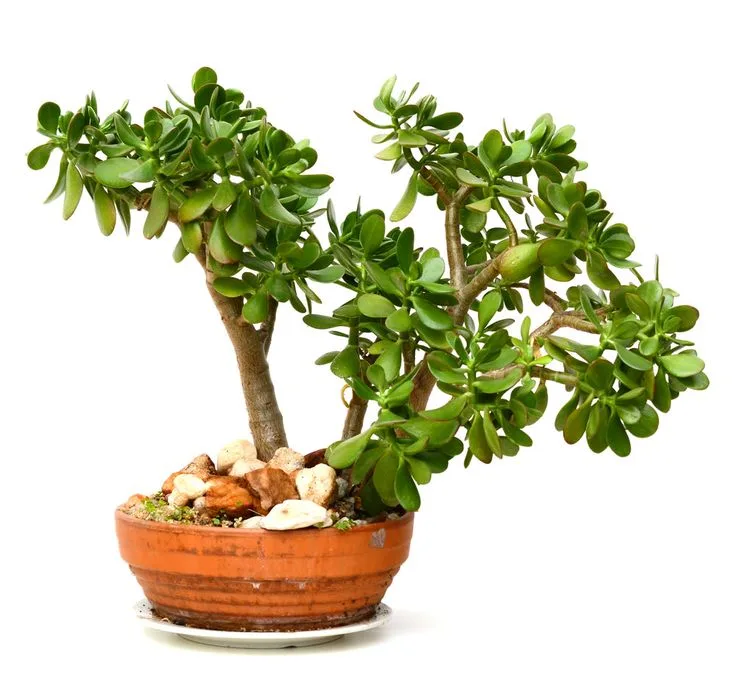Presentation
The Jade Plant (Crassula spp.), also known as the “Jade Tree”, is one of the most prized succulents for its exotic beauty and the rich symbolism it carries. With its glossy leaves and delicate shape, this plant belonging to the Crassulaceae family captivates garden lovers and plant enthusiasts all over the world.
Índice
Meaning
In addition to its charming appearance, the Jade Plant has a deep cultural and spiritual significance in various traditions. It is often associated with prosperity, good luck and resilience, being a symbol of constant growth and perseverance. In Chinese culture, it is known as the “money plant” and is cultivated to attract wealth and financial success. The Jade Plant is also used in Feng Shui practices, as it is believed to bring balance and positive energy to the spaces where it is placed. With its meaning rooted in tradition and its timeless beauty, the Jade Plant transcends nature and becomes a significant element in our lives.
| Common Name | Jade |
|---|---|
| Botanical Name | Crassula ovata |
| Family | Crassulaceae |
| Plant Type | Succulent |
| Adult Size | Up to 1 meter in height |
| Sun Exposure | Full sun to partial shade |
| Soil Type | Well-draining, sandy |
| Soil pH | Neutral to slightly acidic (6.0 to 7.0) |
| Flowering Season | Spring to early summer |
| Flower Color | White or pink |
| Native Area | South Africa |
| Toxicity | Mildly toxic to pets |
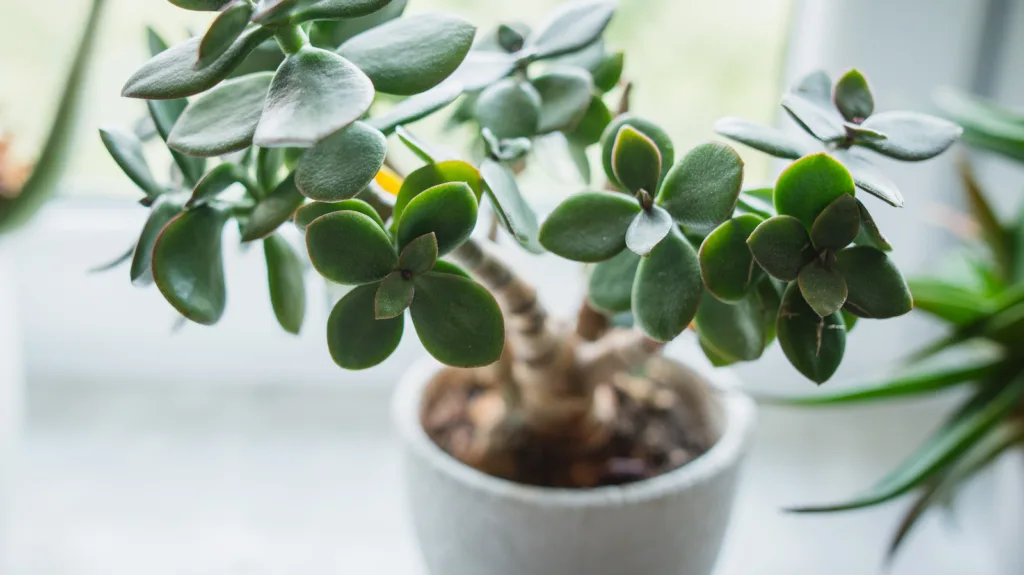
Jade Plant Care
The Jade Plant is a succulent that requires specific care to stay healthy and show off its unique beauty. Here are the main aspects to consider when caring for this enchanting plant:
Light
The Jade Plant appreciates bright light, but it is important to find a balance to avoid burning the leaves. Follow these guidelines:
- Place it in direct sunlight for a few hours a day.
- Avoid prolonged exposure to the scorching midday sun, especially in hot climates.
Soil
The type of soil and proper drainage are essential for the health of the Jade Plant:
- Use a soil suitable for succulents or cacti, which allows water to drain quickly.
- Make sure the pot has drainage holes to prevent water from accumulating.
Water
Correct watering is essential to avoid problems such as root rot:
- Let the soil dry out completely between waterings.
- In general, water less frequently during the winter.
Temperature and humidity
Maintaining a suitable environment is important for the healthy development of the Jade Plant:
- It thrives in moderate temperatures, between 15°C and 25°C.
- Ambient humidity is not critical, but avoid excessively humid environments.
Fertilization
Proper fertilization will help keep the plant healthy and growing:
- During spring and summer, fertilize every 2-4 weeks with a balanced fertilizer for succulents.
- Reduce the frequency in fall and winter, when the plant is dormant.
By following these care guidelines, you will be providing your Jade Plant with the ideal conditions to grow and thrive, allowing its beauty to shine vibrantly.
Types of Jade Plant
The “Jade Plant” is often associated with Crassula ovata, popularly known as the Jade Tree. However, if you are referring to other plants that share the name “Jade”, here are some of the known varieties:
- Crassula ovata (Jade Tree): The best-known variety, with its oval, shiny leaves resembling coins. It has different types, such as variegata, hobbit, Gollum and others.
- Crassula argentea (Dollar Plant): Also called “Dollar Plant”, it is similar to the Jade Tree, but with slightly rounder and thicker leaves.
- Crassula arborescens (Blue Jade Plant): It has blue-green succulent leaves and a bushy structure.
- Crassula rupestris (Pink Jade Plant): Characterized by its small, rounded leaves, which can have shades of pink.
- Crassula perforata (Pearl Necklace): Also known as “Pearl Necklace”, it has rounded leaves that resemble pearls on a chain.
Remember that the name “Jade” is often used for various succulents, and the characteristics can vary between different species. Be sure to check the specific botanical nomenclature for accurate identification.
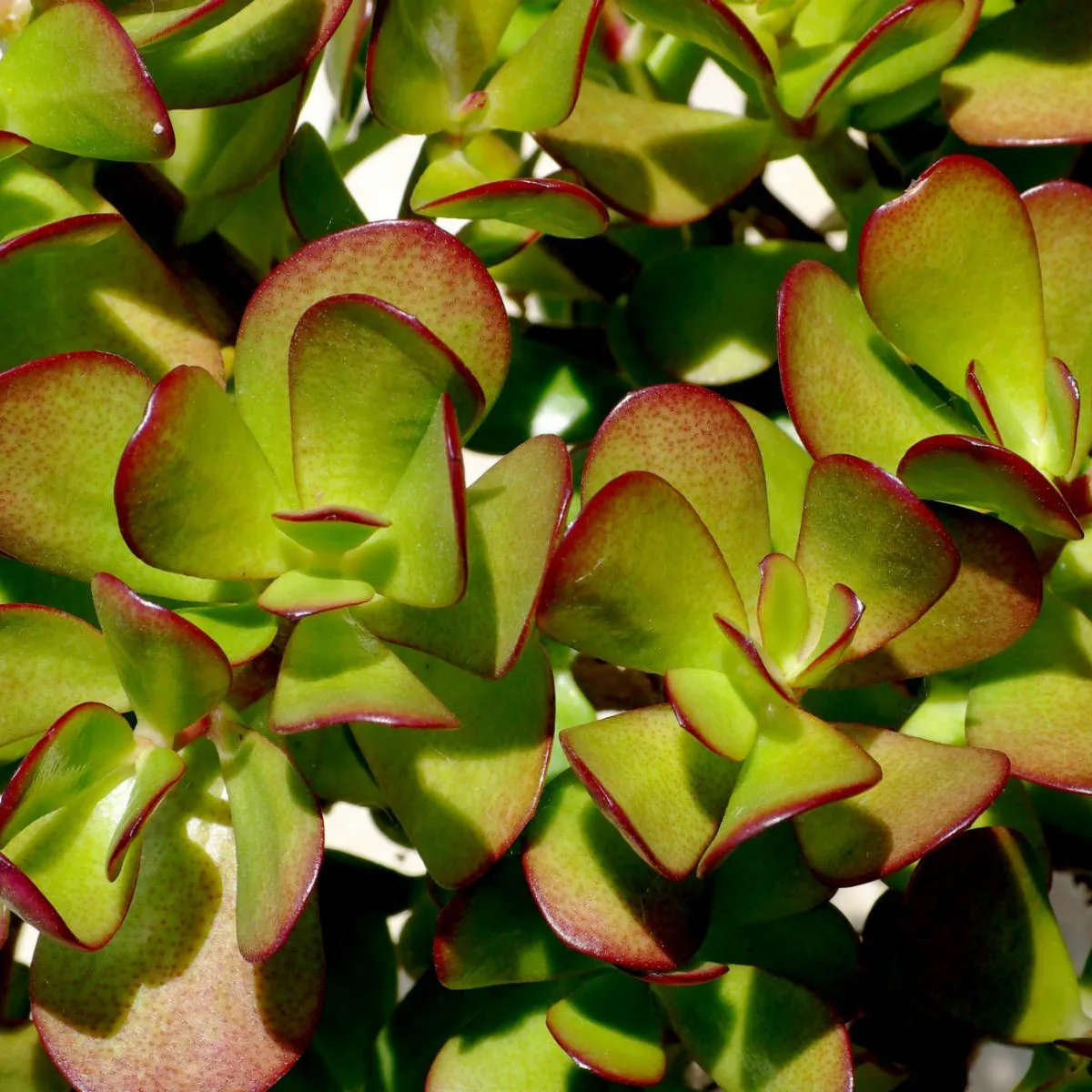
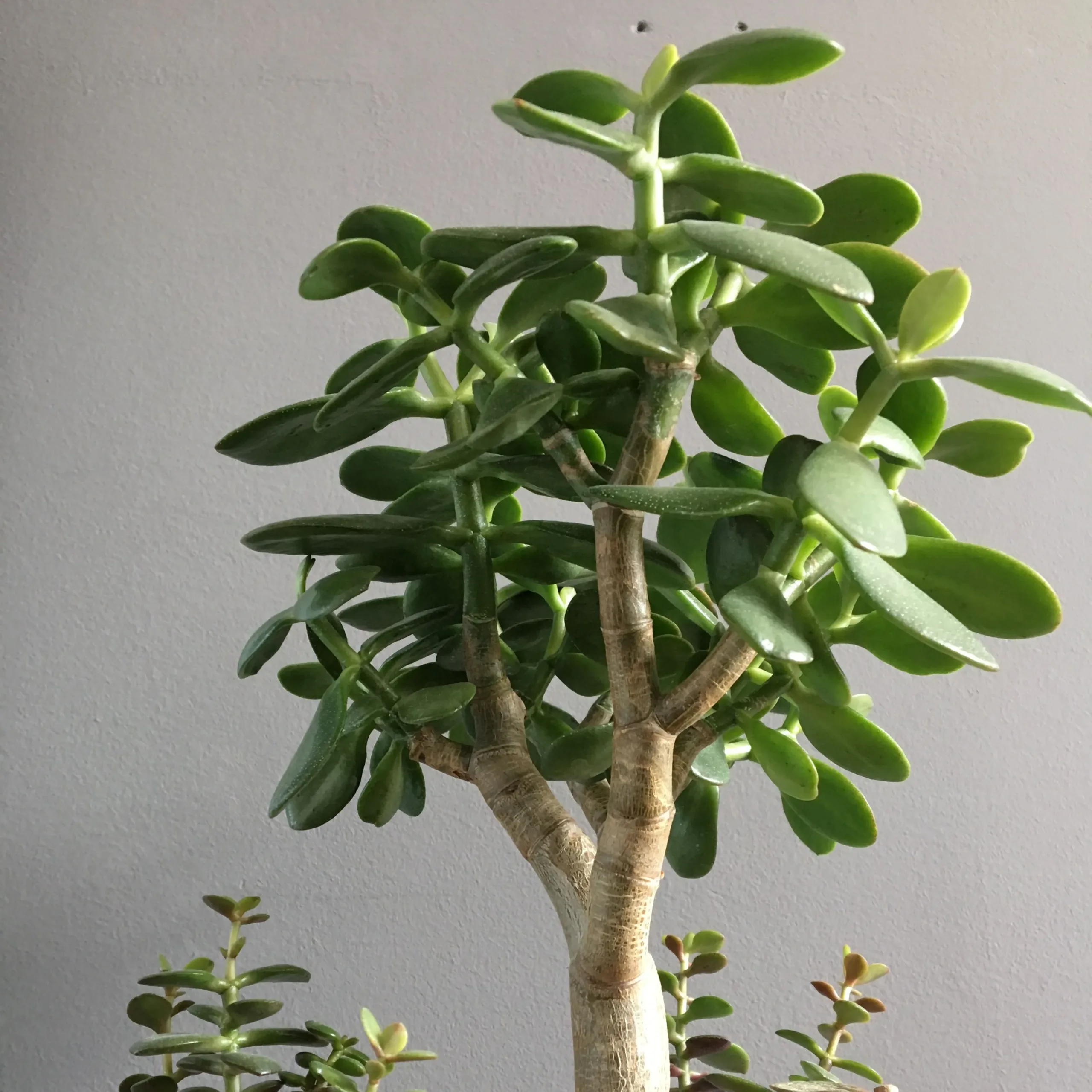
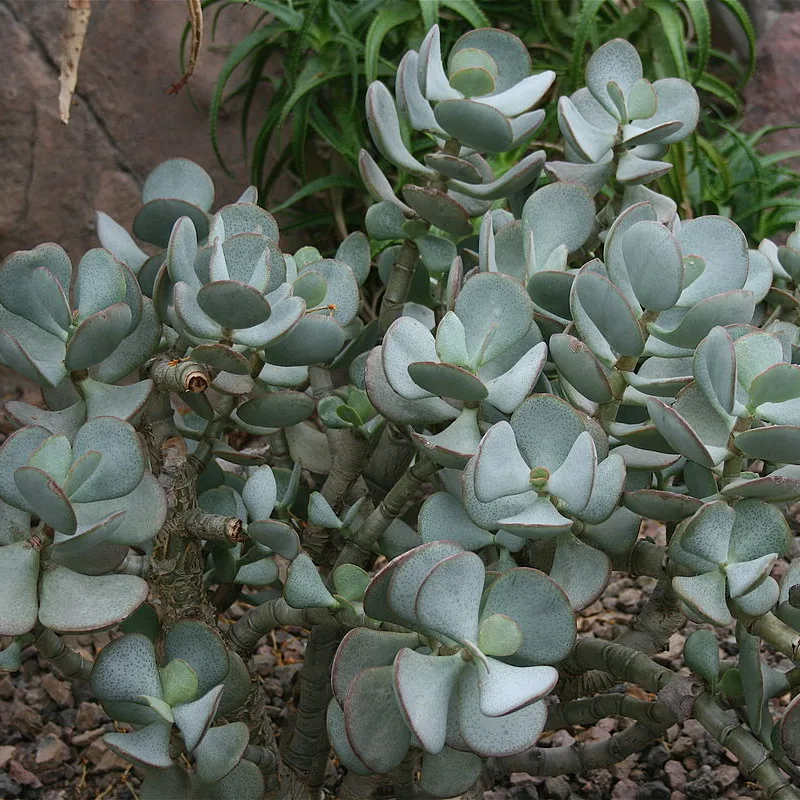
Pruning: Importance and Techniques:
Pruning plays a crucial role in maintaining the health and beauty of the Jade Plant (Crassula spp.), ensuring vigorous growth and a stunning appearance. Let’s explore the importance of pruning and the techniques involved:
The importance of pruning
- Stimulating growth: Proper pruning stimulates the growth of new shoots, keeping the plant dense and full.
- Removing damaged parts: Cutting off damaged leaves or branches prevents the spread of disease and infection.
- Shape and Style: Pruning helps shape the plant, creating a balanced and attractive look.
Pruning Techniques
- Removing damaged leaves and branches: Use clean pruning shears to cut off diseased or damaged leaves and branches.
- Pinching: Remove the tips of longer branches to encourage lateral and compact growth.
- Branch pruning: Cutting above a node or leaf to stimulate the formation of new branches.
- Rejuvenation pruning: Remove older, woody branches at the base to promote the growth of new shoots.
Propagation Methods
Propagating the Jade Plant can be an exciting adventure, allowing you to share its beauty with other spaces. Here are some common methods:
Propagation by cuttings
- Choose a healthy cutting and cut it at least 10 centimeters long.
- Let the stake dry for a few days to prevent rotting.
- Plant the cutting in well-drained soil and keep it slightly moist.
- After a few weeks, the roots will begin to form.
Propagation by Leaves
- Choose healthy leaves and carefully remove them from the mother plant.
- Let the leaves heal for a day or two.
- Plant the leaves in soil suitable for succulents and keep it slightly moist.
- New shoots and roots will develop after a few weeks.
Step by step on how to plant
When planting a Jade Plant, follow these simple steps:
- Choose a pot with drainage.
- Fill the pot with soil for succulents.
- Plant the cuttings or leaves of the Jade Plant.
- Water lightly and wait until the soil is dry before watering again.
By following these guidelines for pruning, propagating and planting, you will be promoting a healthy and vibrant life for your Jade Plant.
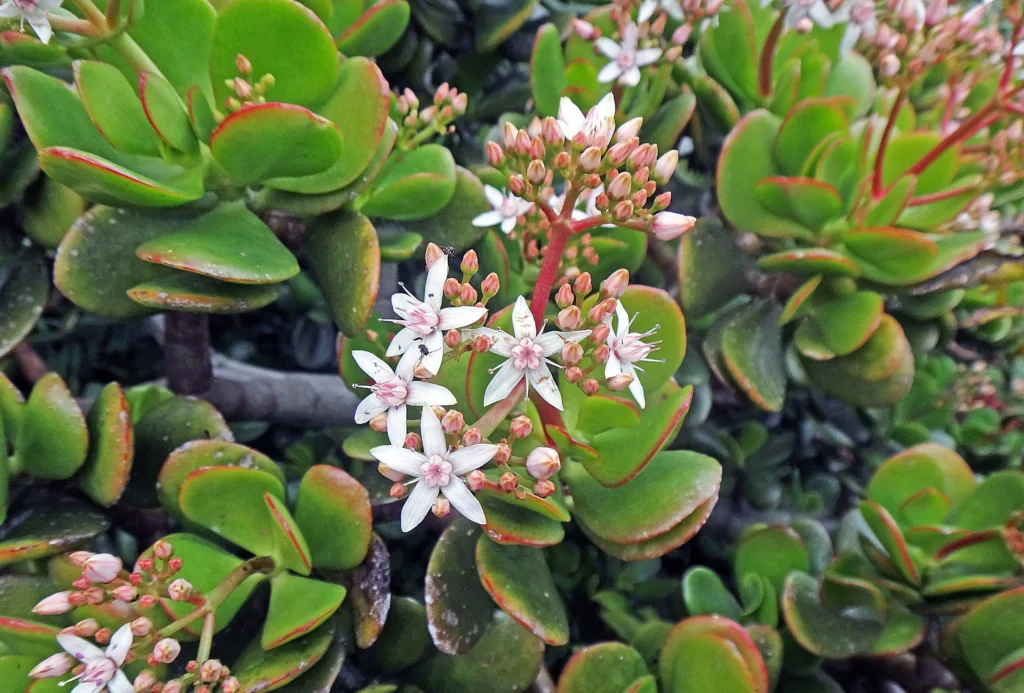
Most common pests and diseases
Although the Jade Plant (Crassula spp.) is generally hardy, it can still face some pests and diseases. Here are the most common ones and their solutions:
- Mealybugs: Small sap-sucking insects. Remove by hand and use neem oil for control.
- Mites: They cause spots on the leaves. Wash the leaves with water or use a water jet to remove them.
- Root rot: Results from excess moisture. Transplant to drier soil and avoid overwatering.
Advanced Care and Maintenance Tips
To keep your Jade Plant lush and healthy, consider these advanced tips:
- Light rotation: Rotate the plant regularly to ensure that all parts receive even light.
- Removing Lower Leaves: As the lower leaves age and fall off, remove them to direct energy to the upper parts of the plant.
- Topiary: With pruning skills, try giving the plant creative shapes, such as topiary, for a unique look.
With these guidelines, your Jade Plant will continue to thrive, displaying its beauty and resilience for many years to come.
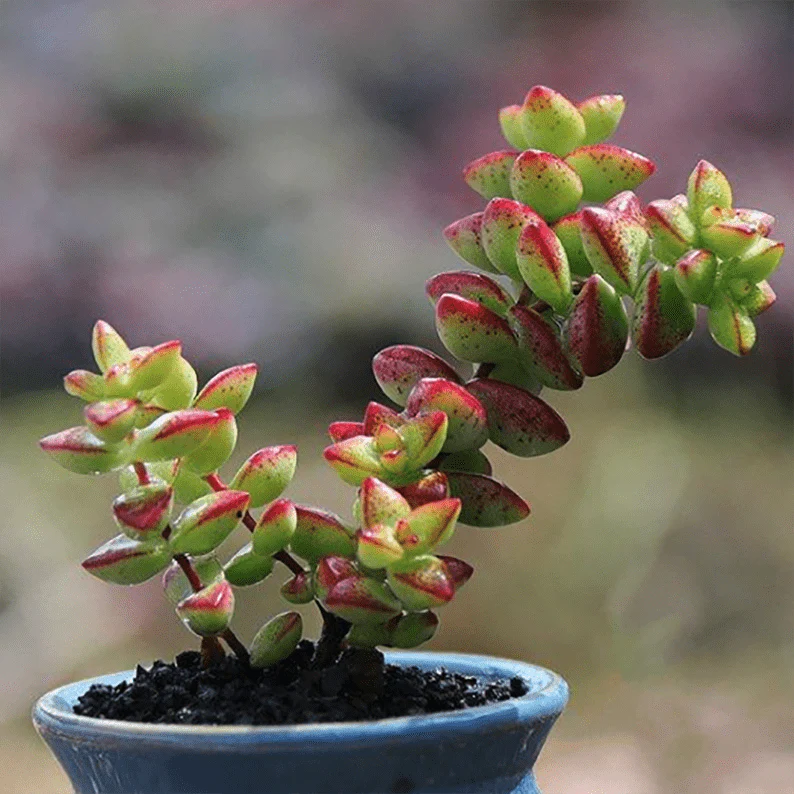
Curiosities and myths
The Jade Plant (Crassula spp.) is a real gem among succulents, not only for its beauty, but also for the curiosities and myths that surround it. Let’s explore some of these fascinating aspects:
Resilience and Prosperity
- In many cultures, the Jade Plant is associated with prosperity and good luck.
- In Chinese culture, it is called the “money plant” and is believed to bring financial prosperity.
- Feng Shui practices often involve the Jade Plant to attract positive energies and balance.
Longevity and Significance
- Its ability to survive in adverse conditions reflects its resilience and longevity.
- The Jade Plant symbolizes patience, constant growth and the importance of taking care of things over time.
Myths and Superstitions
- Some believe that having a Jade Plant in the house protects against the evil eye and negativity.
- Giving someone a Jade Plant is seen as a gesture of friendship and good intentions.
Cultural traditions
- In its native South Africa, the Jade Plant is admired for its ability to withstand difficult times and droughts.
- In Mexico, it is used in Day of the Dead offerings, symbolizing life and death.
Spiritual Value
- In addition to its beauty, the Jade Plant reminds us that the valuable things in life require time to grow and thrive.
- Its simplicity and durability resonate with spiritual values of persistence and harmony with nature.
The Jade Plant transcends its appearance and becomes a living story of beliefs, symbols and deep connections, reminding us that each plant carries a unique story in its succulent leaves.
Conclusion
We explore a fascinating world through the journey of the Jade Plant (Crassula spp.). From its resilience and prosperity to engaging myths and curiosities, this succulent teaches us that nature is full of deep meanings. It transcends the mere ornamental plant, becoming a symbol of luck, patience and connection to cultural traditions.
When growing a Jade Plant, we are invited to appreciate its aesthetic beauty, but also to immerse ourselves in the stories it carries. Its ability to survive and flourish in different contexts reminds us of the importance of caring for our natural world and the relationships we share with it. May the presence of a Jade Plant in our spaces not just be a decoration, but a constant reminder that each succulent leaf has a lot to tell, if we are willing to listen and learn from it.
FREQUENTLY ASKED QUESTIONS
How many times a year does the flower jade?
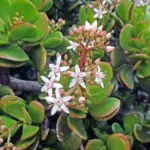
The Jade Plant can bloom once a year, usually in spring. However, flowering can vary according to the growing conditions and the specific variety of the plant.
How to make a jade plant beautiful?
To keep your Jade Plant beautiful, follow these tips:
-Provide adequate light, preferably bright indirect light.
-Water moderately, allowing the soil to dry out between waterings.
-Avoid excess humidity and frequent watering.
-Prune to stimulate growth and maintain shape.
How to care for a potted Jade plant?
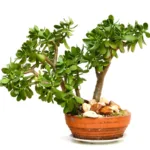
To care for the Jade Plant in a pot:
1-Choose a pot with good drainage.
2-Use soil suitable for succulents.
3-Expose the plant to bright indirect light.
4-Water when the soil is dry, avoiding waterlogging.
What are the benefits of the jade plant?
In addition to its ornamental beauty, the Jade Plant offers benefits:
-Symbolism of prosperity, good luck and growth.
-Resilience and easy care.
-Potential to improve the energy of the environment, according to Feng Shui.
Where is the best place to put the Jade plant?
The best place to put the Jade Plant is in a spot with bright indirect light, such as near a window facing east or west. Avoid direct exposure to strong sunlight, which can cause burns to the leaves.
What does the jade plant attract?
The Jade Plant is often associated with attracting:
Prosperity and good luck, according to various cultural traditions.
Positive energies and balance, in the context of Feng Shui.
Positive vibrations and spiritual connections, due to its deep symbolism.
